
Tripod Buying Guide

John Robertson
This guide will help you to choose the best tripod – or tripods - for you, as you discover what you’ll need if you want to explore the multiple paths of photography.
When it comes to ISO, the marketing for modern cameras will promise you everything, yet there will be multiple times the ISO will claim to be so high that you do not need a tripod. While we are blessed with high ISO, does this mean you can completely remove tripods from your essential photography list?
Obviously not! It doesn’t matter what marketing may tell you, as there will never be a way to achieve long exposures without the support of a three-legged friend. Yet, you can handhold your camera in more situations, thanks to a higher ISO, but this only works if you want to use medium to high speeds. When you get below 1/60 of a second, a tripod is a great thing to have around for the photographs you wish to create.
Why Do I Need a Tripod?
A tripod is not just a support for when the light goes low, requiring you to use a lower shutter speed. It may also be your friend when, for creative reasons, you want to open your aperture, add a strong neutral density filter or get a shallow depth of field. It definitively is essential when you want to use a slower shutter speed, to capture a slice of time in a single frame.
Likewise, in the studio, you may want create multiple frames that all register the subject at exactly the same place. Another common example is if you want to let your camera register multiple images, as many people do when they create time lapses.
Benefits of Using a Tripod
A tripod should not be classified as a support for when the light levels go low, or even as a studio or location photography tool. A tripod is a creativity tool because it expands what you can do with your camera… even if sometimes you do not even use the tripod to support your camera. Tripods are not just used – or should not just be used – to support cameras. For example, some photographers will use a tripod to support a reflector or diffuser when shooting flowers or macro photography scenes. They can also be used to flashguns and situation accessories like acrylic sheets or LED panels. This then gives the photographer the option to move around much more in search of that perfect angle.
As you can see, tripods are creativity tools that allow you easier control over light, not just support for dim light environments. Without a tripod, many of the photographs from the past would simply not exist. Many of the photographs we praise from masters, such as Ansel Adams, would not have been possible without a tripod.
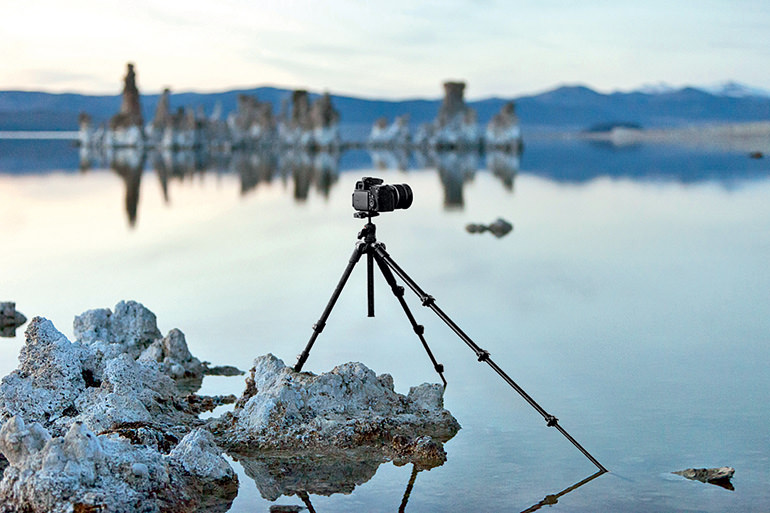
What is the Right Tripod for Me?
Now that we’ve defined what a tripod really is, you should also know that there is no “one tripod to rule them all”. In other words, you will probably want to have more than one tripod, each adapted to different shooting situations and gear. Many photographers will have a tripod that is with them most of the time, but depending on what you’re shooting, you may want to use a different type of tripod.
If you are a beginner when it comes to photography, don’t fall for the common trap many newcomers fall for of buying a flimsy tripod at the supermarket because they believe it will be enough. It never is and you’ll find yourself searching for new set. If you’re serious about your photography, you need a tripod that offers you one essential element for your craft: stability.

Compact Tripods
The Manfrotto Compact is a good choice if you’re just starting out. There are three models to choose from - Light, Action, Advanced - each offering different features around a base tripod, designed so you have no excuses to leave your three-legged friend behind. At just 800gr and 39cm when folded, the Compact Light is Manfrotto’s most portable solution ever, a tripod which will be a good companion for a smaller compact camera, a mirrorless device or an entry level DSLR with a medium lens.
While the Light model only extends to 131cm, the Advanced version takes your camera up to 167cm and offers an Advanced Ball Head, which is the perfect match for your DSLR camera with standard zoom lens and high-level CSCs. In between the two models is the Action, extending to 155cm, offering a special head that is good for both photography and video.
Manfrotto’s Compact series is a good starting point to discover tripods. Choosing which model to buy might not be easy, so let me give you a suggestion: if you’re starting with a compact camera but think you’ll move over to bigger cameras, buy the Action or Advanced mode, if you’re willing to carry the extra weight. If you know that a Smartphone or a compact will be your camera all the time, then the Compact Light is a good choice.
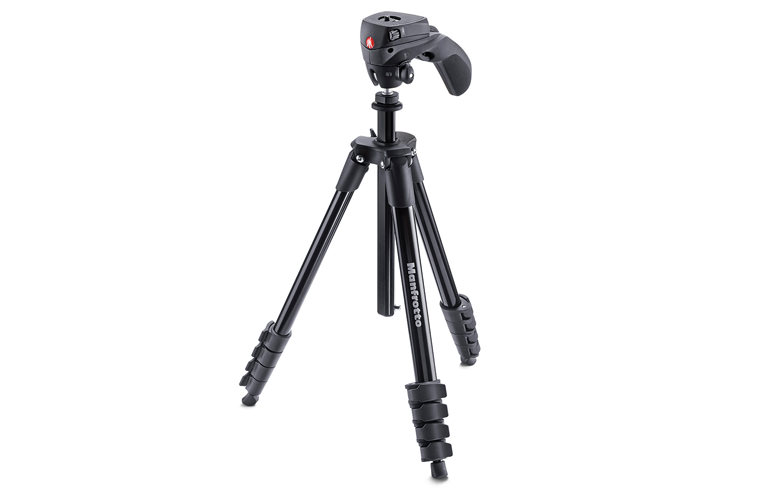
Travel Tripods
Travel photographers always have to think about carrying less, so it makes sense to look for the lightest, most stable tripod you can find. Manfrotto’s Befree series is a good option, even more so when it offers the choice between carbon fiber and aluminum. The carbon fiber version features 100 percent carbon fiber legs that ensure great lightness, transportability, and rigidity – all in one product. This is a good choice for landscape photography, because so many landscapes are associated with travel. This is also the reason why the Befree is considered both a travel tripod and one of the best tripods for a DSLR.
The Befree carbon weighs just 2.42 lbs. (1.1 kg), extends to 55.9in (142 cm) and when folded has 15.7in (40 cm). The aluminium version weighs only 3 lbs. (1.4 kg), and it’s 15.7 in. (40 cm) when folded, extending to 56.7in (144 cm). For extreme portability, choose the Befree One, which folds to 12.6in (32 cm) weighs lbs. (1.4 kg) and extends to 51.18in 130 cm.

Professional Tripods
Many advanced and professional photographers choose a similar set up: the Manfrotto 055 with a X-PRO 3-Way Head. The 055 is available in carbon fiber versions providing extra camera stability and maximum transportability, thanks to increased rigidity and reduced weight, or in aluminium, which may be a more logical choice if you do not carry your tripod around many times. For reference, the carbon version of the 3 section tripod weighs 70.54 oz (2000 g) while the aluminium version goes up to 88.18 oz (2500 g). This is for the tripod alone, without the head.
The 055 series has some features that make it a versatile companion for your adventures, either in the studio or on location. The center column extends vertically but can also be used horizontally, opening a wide range of framing and shooting possibilities, and of which can be done with the camera attached. The Quick Power Lock levers responsible for blocking and unblocking each leg section are easy to open and close, even with gloves on. With just one hand, they allow for the fast and precise setting of the individual height of each leg.

Furthermore, the 055 allows each leg to be independently and solidly set to any of the preset angles, again allowing considerable positioning freedom. From close to the ground, all the way up to its full extension, this is a working tool that will never let you down.
A rotating bubble level on top and an Easy Link connector, which allows using photo or video accessories on an extending arm or bracket, make this tripod a must have accessory if you are after a versatile support for your gear. To better support your camera, nothing beats the 3-Way Head added to the 055. The X-PRO 3-Way Head is a unique head with retractable levers, which make it ultra-compact. The levers, when extended, allow for fine control of the head’s position, and the tripod also features new friction controls on the portrait and tilt axes, to help balance the weight of camera equipment. This ensures fine framing adjustments can be made with the locking knobs open, only locking everything down once the shot is ready.
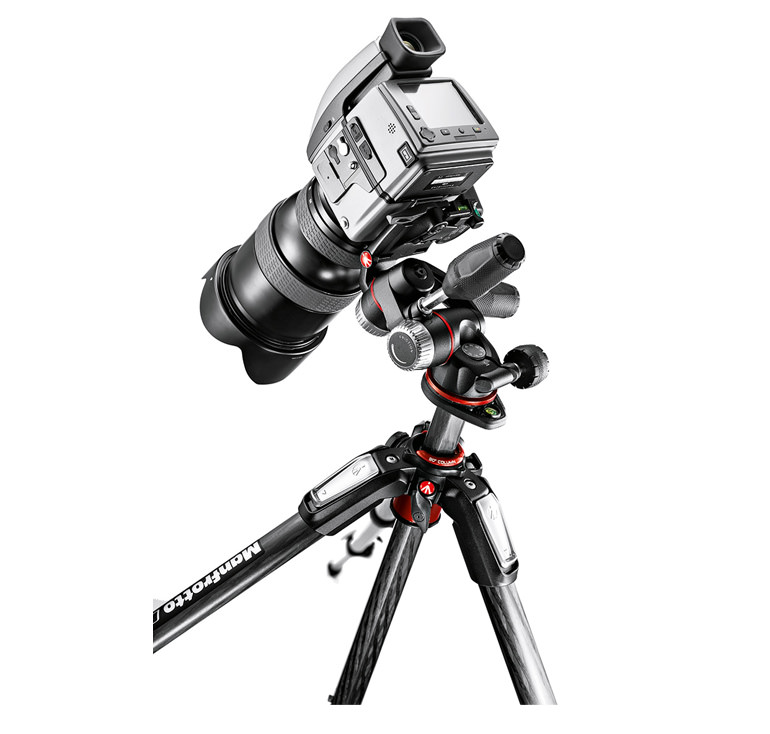
The 055 is available with 3 and 4 sections, a difference that is worth mentioning. While many may prefer the 3 section, as it is usually said to be more stable and less prone to mechanical problems, there is one advantage to the 4 section: with the legs folded the tripod has 21.26 in (54 cm) against 24.8 in (63 cm). Obviously, the lower section has a smaller diameter, which may – according to some - introduce less stability, but the tripod’s length may still be an important factor when packing your gear. This is also a travel tripod, if you’re willing to carry it, and is a great support for landscape photography with either a DSLR or a CSC camera, as well as when you’re using long lenses.
It does not matter how many tripods you have, there will always be a time when a single leg will be all you need. A monopod is a great solution and the XPRO Monopod+, in aluminium and with 4 section legs, is your best choice. A professional monopod, designed so it supports long lenses, this product is ideal for sports and nature photographers. The XPRO Monopod inherited features of the 190 and 055 collections of tripods and offers the same Quick Power Lock (QPL) system that strongly locks the lever on the flat face of the tube, reducing unwanted jerky movements. Paired with a photo monopod head 234RC on top, it reaches a maximum height of 180cm, making it one of the best platforms for when you need a fast and versatile support to carry along.
Studio Tripods
If your studio is as far as you go when it comes to photography, then the Manfrotto 475B is the tripod for you. Built in aluminium, the 475B is heavy, at 5300g, but that means it offers the ideal stability for the conditions it will be used in. Yet being heavy does not mean it is less agile than the other tripods when it comes to adjusting the legs or the center column. The geared center column allows safe, precise height adjustment, even under heavy loads up to a maximum of 12 kg, while the legs can be set to a different angle of spread for more flexible, versatile positioning, as well as keeping camera equipment well-balanced over the tripod's center of gravity.
Contributing to the 475B’s stability is the center brace system, which can be operated in a symmetric or asymmetric way. This allows for a fast positioning of all the legs with the same spread or, if needed, individual setting of the angle for each leg, something that may be desirable when you need to reduce the tripod’s footprint. The telescopic center braces offer two “click stop” positions that allow you to find the position for the legs.
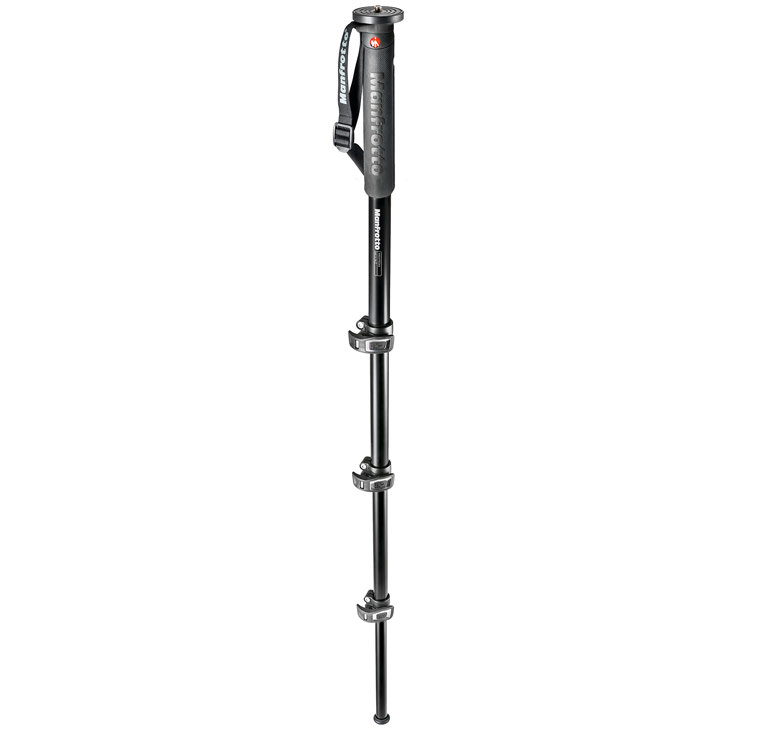
Video Tripods
Although you can use different tripods for video, sometimes even going for a compromise, if you’re both a photographer and videographer, or if you’re into professional video, you may need a different kind of tripod. It is time, then, to look at the Manfrotto MVK502AM-1, a traditional 2-stage, aluminium twin-tube video tripod that has professional features, yet is designed to be intuitive, user-friendly option that is suited to lightweight applications.
The Professional Fluid Video System/Aluminium/Telescopic Twin Leg, as it is referenced in Manfrotto’s catalog, is a professional fluid video system named MVK502AM-1 and comprised of the fluid video head (75mm half ball) MVH502A and the telescopic twin leg tripod MVT502AM.
The MVH502A is designed for use with HDSLR cameras and latest interchangeable lens cameras. It offers professional features, such as high-performance variable fluidity and a counterbalance setting, designed to match the weight of the most popular cameras and their accessories, such as external monitors, lights or microphones. Featuring two Easy Link connectors for placement of an external monitor, alongside other equipment, the head has a pre-set counterbalance of 4kg (8.8 lbs), but is able to support equipment of up to 7kg (15.4 lbs).
The tripod supporting the head, with the reference of Manfrotto MVT502AM, has telescopic aluminium legs for improved compactness and reduced weight; its innovative ellipse-profile tubing with redesigned leg locking collars gives it excellent levels of rigidity and stability. Featuring a Variable Fluid Drag System on PAN and TILT movements, counterbalance system on TILT movement, a sliding plate for the fastest camera connection and set up and leveling bubble for easy setup, the tripod comes with a rubber strap to ensure easier, safer transport, as well as coming supplied with a padded carrying bag.
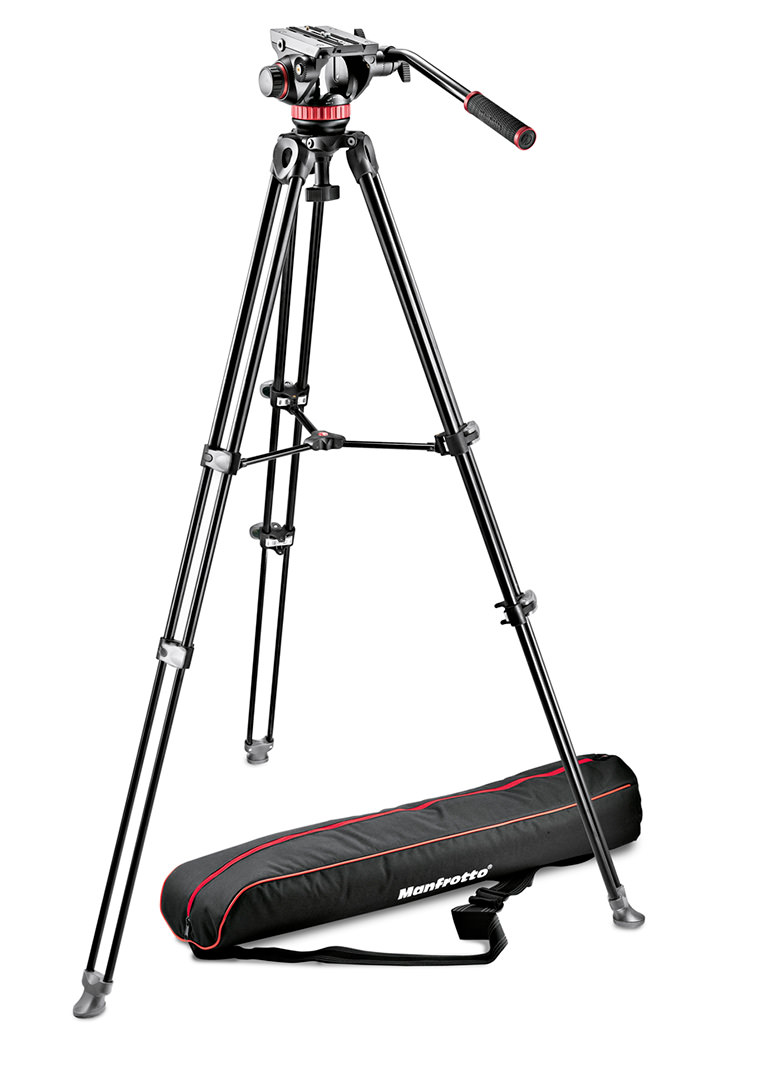
Finding the right tripod for you and your needs can be a trial and error process but hopefully our guide will begin to point you in the right direction. As a reminder here are our top tips for choosing a tripod;
- Be clear on it’s purpose whether it’s photography, video or accessories
- Think about where you will use it and how you will transport it
- Be sure on your requirements, what kind of head do you need, what will your load weight be?
Many photographers will use multiple tripods. A typical tripod arsenal could consist of two monopods and a normal tripod, this allows the user to be equipped for any eventuality, especially if more walking is required where a monopod could be ideal.
Hopefully this guide helps you to understand that tripods are essential for photography, and not just for when the light starts to fade. Tripods are not just a camera accessory; they give photographers extended creative options. In a time photography is becoming more and more popular, a tripod could really help you stand out from the crowd.


























